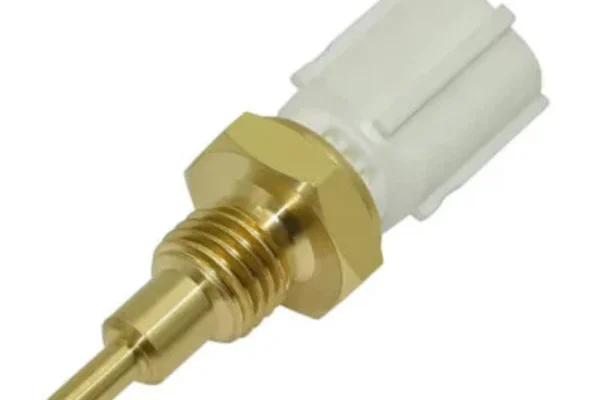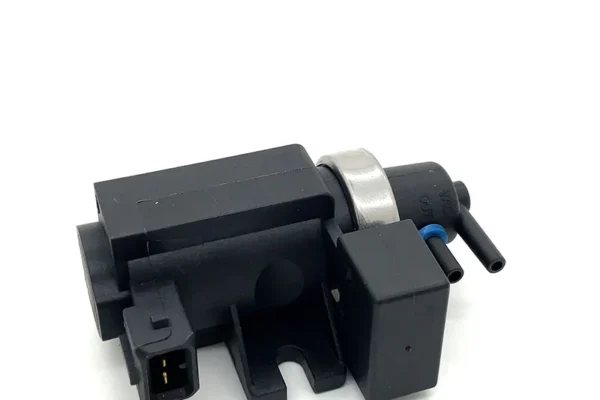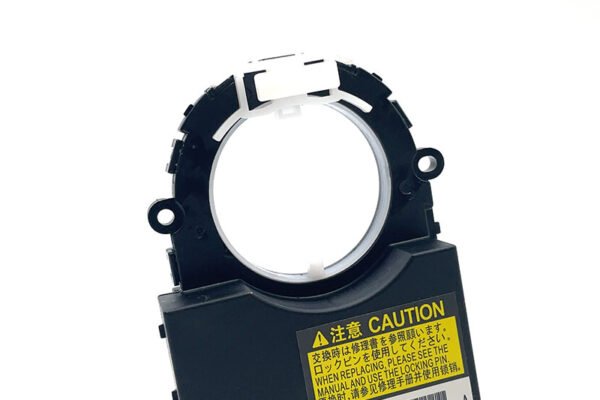In modern vehicle steering systems, digital sensing technology plays an increasingly critical role. Among these components, the steering angle sensor stands out as a key part that supports vehicle stability, driving safety, and advanced vehicle control. In the automotive aftermarket and supply chain, understanding this component enhances purchasing efficiency and reduces maintenance risks.
This article explains what a steering angle sensor is, how it works, common failure signals, and the essential sourcing tips that B2B buyers need to know.
Understanding the Steering Angle Sensor
A steering angle sensor is an automotive electronic component installed inside the steering column. It measures the steering direction and rotation angle of the steering wheel and sends this information to onboard control modules. When the driver turns the steering wheel, the sensor identifies the angle, speed, and position, enabling precise feedback in real time.
This sensor serves as a communication bridge between the driver’s steering motion and the vehicle’s control system. By interpreting the steering angle correctly, the vehicle can activate safety systems intelligently and respond efficiently under varying driving conditions.
The steering angle sensor is widely used in automotive electronic stability control, advanced driving assistance, lane-keeping systems, and torque management systems.
Why the Steering Angle Sensor Matters in Today’s Automotive Industry
From a B2B procurement perspective, the steering angle sensor influences multiple core systems, including:
- Vehicle stability and safety control
- Steering precision and driver comfort
- Integration with intelligent vehicle electronics
When the sensor delivers accurate data, the vehicle maintains traction and stability more effectively, especially on slippery surfaces or during sudden turns. It supports predictive vehicle control, enabling proactive safety functions.
In addition to steering-related components, our product portfolio also includes categories critical to vehicle performance. We also supply a wide range of Engine System Parts to meet diversified sourcing needs.

How a Steering Angle Sensor Works
Although invisible during normal usage, the steering angle sensor continuously collects steering wheel position data and converts mechanical rotation into readable electronic signals.
Key Functional Logic
Motion Detection: The sensor detects directional rotation—whether the wheel is turning left or right.
Angle Measurement: It monitors how far the wheel turns from the center position and calculates the steering angle.
Signal Transmission: The collected data is transmitted to vehicle control units, enabling dynamic calculation and response.
Because the steering angle sensor supports artificial intelligence and electronic control integration, even small inaccuracies can affect system decision-making.
Typical Failure Symptoms of a Faulty Steering Angle Sensor
When a steering angle sensor fails, the consequences are easily noticeable from multiple system warnings. Dashboards begin displaying stability control errors or steering alerts, and the vehicle may exhibit abnormal steering feedback or reduced steering assistance.
For readers interested in learning more about identifying failure signals, here is a further resource. For more information, see our article 7 Bad steering angle sensor symptoms.
Why B2B Buyers Should Care About Steering Angle Sensors
Steering angle sensors have become standard components in today’s vehicles. In the aftermarket supply chain, their demand continues to grow because of:
- The increasing adoption of intelligent electronic control systems
- The rise of vehicle electrification and steering automation
- Growing replacement needs from vehicle diagnostics and maintenance
B2B buyers—especially distributors, auto repair service chains, and wholesalers—benefit from keeping this part in steady stock due to frequent demand in maintenance scenarios.
Benefits to B2B Distributors and Wholesalers
- Consistent market demand
- Strong compatibility across vehicle models
- Quick turnover rate in aftermarket inventory
Maintaining supply ensures that repair workshops can perform fast replacements without delays.

Key Considerations When Purchasing Steering Angle Sensors
When sourcing from suppliers, focusing solely on price may lead to unstable quality or mismatched components. To better illustrate the importance of vehicle compatibility in sourcing steering components, consider the situation of brand-specific replacement.
Many B2B buyers have an increasing demand for Steering Angle Sensor for Lexus, as this category requires precise fitment and reliable signal calibration to ensure correct communication with advanced vehicle control systems. The following aspects ensure reliable procurement:
Correct Fitment & Model Compatibility
Ensure precise matching between the sensor and the vehicle steering column structure. Incorrect fitment leads to:
- Installation difficulty
- Failure to transmit accurate angle data
- Unnecessary returns or after-sales disputes
Production Process Stability
Stable materials and consistent manufacturing directly affect sensor accuracy. Suppliers with internal R&D capability and integrated production processes can provide stable quality and faster response times.
Lead Time and Shipping Capacity
For B2B orders, timely shipping is often more crucial than the lowest unit price. Fast delivery keeps supply chains running smoothly and avoids maintenance delays. Professional documentation and responsive after-sales service reduce communication costs and improve collaboration efficiency.
How We Support B2B Buyers
Since 2007, the company behind this article has focused on auto part production and offers solutions tailored for B2B procurement:
- End-to-end supply chain support
- Integrated industry & trade capability
- No minimum order quantity
- Exclusive inventory for both old-model vehicles and newer vehicle models
With a company-owned distribution network, sourcing steering angle sensors and related automotive components becomes efficient, convenient, and cost-effective for international distributors and wholesalers. The team dedicates itself to ensuring smooth order execution—from design to shipping—and provides support that reduces the buyer’s operational workload.
Final Thoughts
A steering angle sensor plays a critical role in ensuring driving safety, enhancing control precision, and enabling intelligent vehicle systems. For B2B buyers, understanding how the component works and how to evaluate suppliers helps reduce sourcing risks and strengthen competitiveness in the aftermarket.
Steering angle sensor demand will continue to rise as vehicles evolve toward intelligent steering and electronic control integration. Ensuring the right components are selected and kept in inventory positions, distributors, and repair service providers to serve market needs efficiently.













